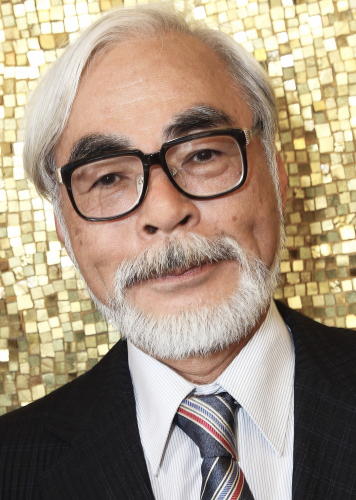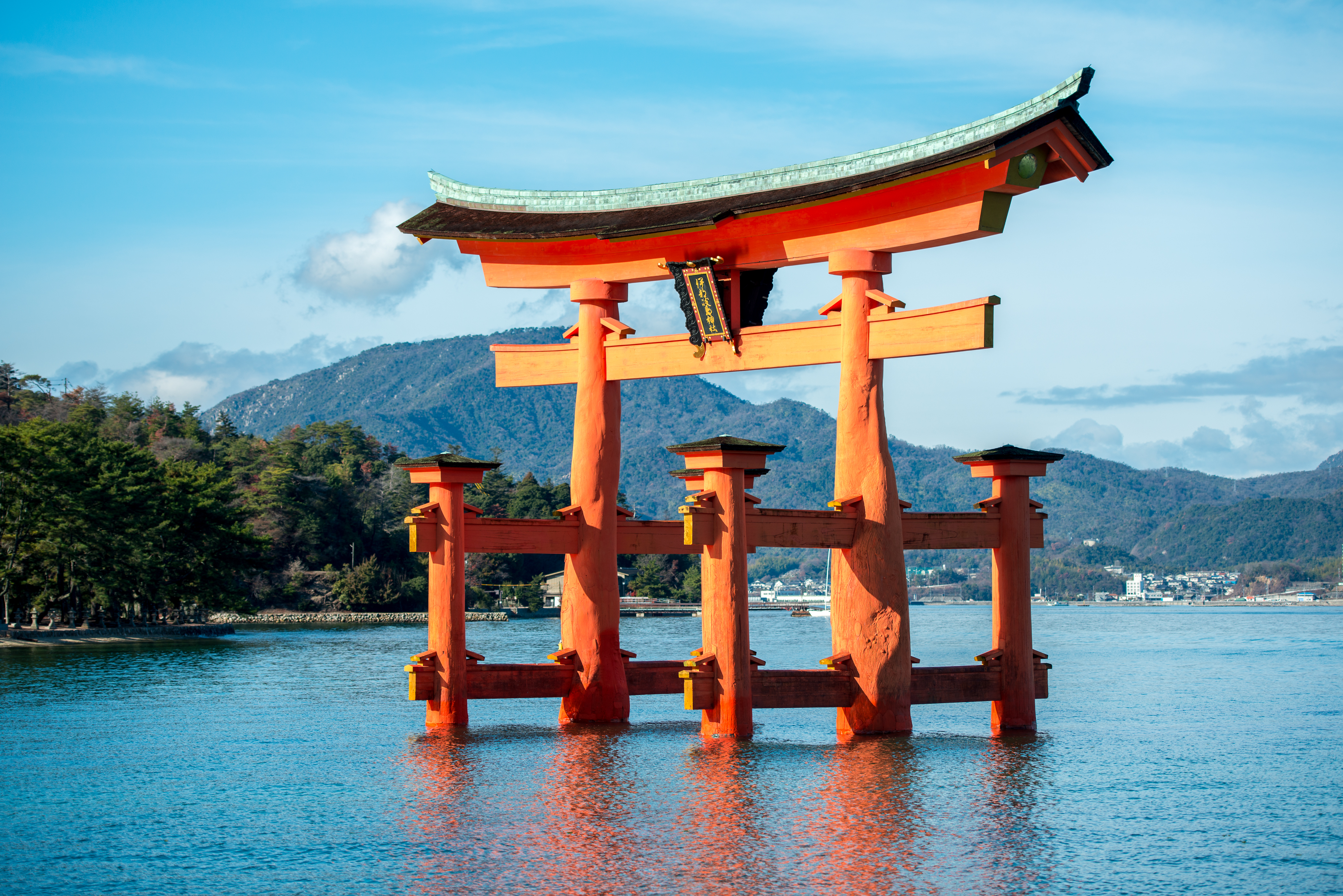|
Yaoyorozu No Kami
Yaoyorozu no Kami (八百万の神, ''Eight Million Gods'') is a term referring to kami in Shinto. The phrase "eight million gods" in Shinto religion does not mean that there are exactly 8 million gods. It means there are too many gods to count. At the time infinity was not a known concept and 8 is a lucky number in Asian culture. It is used in many other phrases such as Yatagarasu. Sometimes the kami are divided into the Amatsukami, Kunitsukami, and the eight million other kami. Emperor Sujin famously communed with the eight hundred myriad deities for help reorganizing the Yamato Kingship in a time of crisis. This doctrine says that there are countless Kami, including those that control natural phenomena such as the ocean, mountains, and wind, as well as those that are closely related to human life. Ancestors and influential figures who have achieved great things for their communities are also respected as "Kami." Many Shinto customs and stories were documented in Kojiki and N ... [...More Info...] [...Related Items...] OR: [Wikipedia] [Google] [Baidu] |
Kami
are the deities, divinities, spirits, phenomena or "holy powers", that are venerated in the Shinto religion. They can be elements of the landscape, forces of nature, or beings and the qualities that these beings express; they can also be the spirits of venerated dead people. Many ''kami'' are considered the ancient ancestors of entire clans (some ancestors became ''kami'' upon their death if they were able to embody the values and virtues of ''kami'' in life). Traditionally, great leaders like the Emperor could be or became ''kami''. In Shinto, ''kami'' are not separate from nature, but are of nature, possessing positive and negative, and good and evil characteristics. They are manifestations of , the interconnecting energy of the universe, and are considered exemplary of what humanity should strive towards. ''Kami'' are believed to be "hidden" from this world, and inhabit a complementary existence that mirrors our own: . To be in harmony with the awe-inspiring aspects of na ... [...More Info...] [...Related Items...] OR: [Wikipedia] [Google] [Baidu] |
Spirited Away
is a 2001 Japanese animated fantasy film written and directed by Hayao Miyazaki, animated by Studio Ghibli for Tokuma Shoten, Nippon Television Network, Dentsu, Buena Vista Home Entertainment, Tohokushinsha Film, and Mitsubishi and distributed by Toho.Sen To Chihiro No Kamikakushi ". http://www.bcdb.com, 13 May 2012 The film features the voices of Rumi Hiiragi, Miyu Irino, Mari Natsuki, Takeshi Naito, Yasuko Sawaguchi, [...More Info...] [...Related Items...] OR: [Wikipedia] [Google] [Baidu] |
Marie Kondo
, also known as , is a Japanese organizing consultant, author, and TV presenter. Kondo has written four books on organizing, which have collectively sold millions of copies around the world. Her books have been translated from Japanese into several languages and her book ''The Life-Changing Magic of Tidying Up'' (2011) has been published in more than 30 countries. It was a best-seller in Japan and in Europe, and was published in the United States in 2014. In the United States and the United Kingdom, the profile of Kondo and her methods were greatly promoted by the success of the Netflix series '' Tidying Up with Marie Kondo'', released in 2019, which gained Kondo a nomination for the Primetime Emmy Award for Outstanding Host for a Reality or Competition Program. In August 2021, Netflix released a follow-up show, ''Sparking Joy with Marie Kondo''. She was listed as one of ''Time'' "100 most influential people" in 2015. Kondo opened an online store called KonMari in 2019. Back ... [...More Info...] [...Related Items...] OR: [Wikipedia] [Google] [Baidu] |
Confucian
Confucianism, also known as Ruism or Ru classicism, is a system of thought and behavior originating in ancient China. Variously described as tradition, a philosophy, a religion, a humanistic or rationalistic religion, a way of governing, or a way of life, Confucianism developed from what was later called the Hundred Schools of Thought from the teachings of the Chinese philosopher Confucius (551–479 BCE). Confucius considered himself a transmitter of cultural values inherited from the Xia (c. 2070–1600 BCE), Shang (c. 1600–1046 BCE) and Western Zhou dynasties (c. 1046–771 BCE). Confucianism was suppressed during the Legalist and autocratic Qin dynasty (221–206 BCE), but survived. During the Han dynasty (206 BCE–220 CE), Confucian approaches edged out the "proto-Taoist" Huang–Lao as the official ideology, while the emperors mixed both with the realist techniques of Legalism. A Confucian revival began during the Tang dynasty (618–907 CE). In the late ... [...More Info...] [...Related Items...] OR: [Wikipedia] [Google] [Baidu] |
Buddhism
Buddhism ( , ), also known as Buddha Dharma and Dharmavinaya (), is an Indian religion or philosophical tradition based on teachings attributed to the Buddha. It originated in northern India as a -movement in the 5th century BCE, and gradually spread throughout much of Asia via the Silk Road. It is the world's fourth-largest religion, with over 520 million followers (Buddhists) who comprise seven percent of the global population. The Buddha taught the Middle Way, a path of spiritual development that avoids both extreme asceticism and hedonism. It aims at liberation from clinging and craving to things which are impermanent (), incapable of satisfying ('), and without a lasting essence (), ending the cycle of death and rebirth (). A summary of this path is expressed in the Noble Eightfold Path, a training of the mind with observance of Buddhist ethics and meditation. Other widely observed practices include: monasticism; "taking refuge" in the Buddha, the , and the ... [...More Info...] [...Related Items...] OR: [Wikipedia] [Google] [Baidu] |
Chinjugami
is a god enshrined to protect a specific building or a certain area of land. Nowadays, it is often equated with Ujigami and Ubusunagami. A shrine that enshrines a guardian deity is called a Chinjusha. They contrast with Ujigami by having ties to land and buildings rather than bloodlines. Anyone living on the land worships them regardless of blood ties. Overview It is said to have originated in the Garanshin () of China. In the Buddhist temples of Japan, as Buddhism was introduced and Shinbutsu-shūgō progressed, Shinto deities were enshrined to protect temples, and later Shinto deities were also enshrined in buildings other than temples and in certain areas of land. Nowadays, it is often thought that the jinchujin is the deity that lives in the land (Jinushigami), but if we trace back to the beginning, the jinchujin was a newly enshrined deity to suppress and subjugate the jishu kami. In other words, when people built artifacts on a certain land, they would enshrine a new ... [...More Info...] [...Related Items...] OR: [Wikipedia] [Google] [Baidu] |
Tutelary Deity
A tutelary () (also tutelar) is a deity or a spirit who is a guardian, patron, or protector of a particular place, geographic feature, person, lineage, nation, culture, or occupation. The etymology of "tutelary" expresses the concept of safety and thus of guardianship. In late Greek and Roman religion, one type of tutelary deity, the '' genius'', functions as the personal deity or '' daimon'' of an individual from birth to death. Another form of personal tutelary spirit is the familiar spirit of European folklore. Ancient Greece Socrates spoke of hearing the voice of his personal spirit or ''daimonion'': The Greeks also thought deities guarded specific places: for instance, Athena was the patron goddess of the city of Athens. Ancient Rome Tutelary deities who guard and preserve a place or a person are fundamental to ancient Roman religion. The tutelary deity of a man was his Genius, that of a woman her Juno. In the Imperial era, the Genius of the Emperor was a focus o ... [...More Info...] [...Related Items...] OR: [Wikipedia] [Google] [Baidu] |
Nara Period
The of the history of Japan covers the years from CE 710 to 794. Empress Genmei established the capital of Heijō-kyō (present-day Nara, Nara, Nara). Except for a five-year period (740–745), when the capital was briefly moved again, it remained the capital of Japanese civilization until Emperor Kanmu established a new capital, Nagaoka-kyō, in 784, before moving to Heian-kyō, modern Kyoto, a decade later in 794. Japanese society during this period was predominantly agricultural and centered on village life. Most of the villagers followed Shinto, Shintō, a religion based on the worship of natural and ancestral spirits named ''kami.'' The capital at Nara was modeled after Chang'an, the capital city of the Tang dynasty. In many other ways, the Japanese upper classes patterned themselves after the Chinese, including adopting the Chinese writing system, Chinese fashion, and a Chinese version of Buddhism. Literature Concentrated efforts by the Emperors of Japan, imperial court ... [...More Info...] [...Related Items...] OR: [Wikipedia] [Google] [Baidu] |
Kojiki
The , also sometimes read as or , is an early Japanese chronicle of myths, legends, hymns, genealogies, oral traditions, and semi-historical accounts down to 641 concerning the origin of the Japanese archipelago, the , and the Japanese imperial line. It is claimed in its preface to have been composed by Ō no Yasumaro at the request of Empress Genmei in the early 8th century (711–712), and thus is usually considered to be the oldest extant literary work in Japan. The myths contained in the as well as the are part of the inspiration behind many practices. Later, they were incorporated into Shinto practices such as the purification ritual. Composition It is believed that the compilation of various genealogical and anecdotal histories of the imperial (Yamato) court and prominent clans began during the reigns of Emperors Keitai and Kinmei in the 6th century, with the first concerted effort at historical compilation of which we have record being the one made in 620 un ... [...More Info...] [...Related Items...] OR: [Wikipedia] [Google] [Baidu] |
Shinto
Shinto () is a religion from Japan. Classified as an East Asian religion by scholars of religion, its practitioners often regard it as Japan's indigenous religion and as a nature religion. Scholars sometimes call its practitioners ''Shintoists'', although adherents rarely use that term themselves. There is no central authority in control of Shinto, with much diversity of belief and practice evident among practitioners. A polytheistic and animistic religion, Shinto revolves around supernatural entities called the . The are believed to inhabit all things, including forces of nature and prominent landscape locations. The are worshiped at household shrines, family shrines, and ''jinja'' public shrines. The latter are staffed by priests, known as , who oversee offerings of food and drink to the specific enshrined at that location. This is done to cultivate harmony between humans and and to solicit the latter's blessing. Other common rituals include the dances, rites of pa ... [...More Info...] [...Related Items...] OR: [Wikipedia] [Google] [Baidu] |
Kami
are the deities, divinities, spirits, phenomena or "holy powers", that are venerated in the Shinto religion. They can be elements of the landscape, forces of nature, or beings and the qualities that these beings express; they can also be the spirits of venerated dead people. Many ''kami'' are considered the ancient ancestors of entire clans (some ancestors became ''kami'' upon their death if they were able to embody the values and virtues of ''kami'' in life). Traditionally, great leaders like the Emperor could be or became ''kami''. In Shinto, ''kami'' are not separate from nature, but are of nature, possessing positive and negative, and good and evil characteristics. They are manifestations of , the interconnecting energy of the universe, and are considered exemplary of what humanity should strive towards. ''Kami'' are believed to be "hidden" from this world, and inhabit a complementary existence that mirrors our own: . To be in harmony with the awe-inspiring aspects of na ... [...More Info...] [...Related Items...] OR: [Wikipedia] [Google] [Baidu] |


_(22790692681).jpg)


.png)

